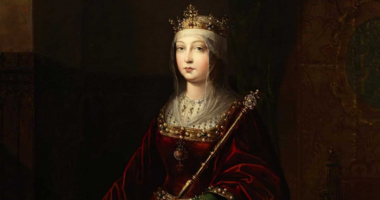Top 5 Interesting Facts about Allen Ginsberg
American poet Allen Ginsberg was a key member in the 1950s Beat Generation and is best known for the intensely divisive poem Howl. He was the son of Russian ... read more...immigrant Naomi and poet and teacher Louis Ginsberg. When Allen was a pre-teen, he started journaling and started sending letters to The New York Times with political overtones. Later, he made many important contributions to world literature. The following are interesting facts about Allen Ginsberg that Toplist has to offer you if you are interested in the life of this famous poet.
-
One of the interesting facts about Allen Ginsberg is he had a vision. Ginsberg experienced an audio hallucination in 1948 while reading William Blake's poems in a Harlem apartment (later referred to as his “Blake vision”). The voice that Ginsberg initially claimed to have heard was that of God was later identified by him as reading Ah! Sun-flower, The Sick Rose, and The Little Girl Lost, which he also referred to as the “voice of the old of days”
The encounter went on for several days. Ginsberg thought he had seen evidence of the universe's interconnection. He noticed that the latticework on the fire escape had been made by a hand, and when he turned to gaze at the sky, he had the impression that the sky itself had been made by a hand. He clarified that his drug use did not cause this delusion, but he claimed that he afterwards tried to recreate the same feeling with different drugs. Ginsberg stated: “Not that some hand had placed the sky, but that the sky was the living blue hand itself. Or that God was in front of my eyes, existence itself was God”, and “it was a sudden awakening into a totally deeper real universe than I'd been existing in.”
Ginsberg took peyote in 1954 while penning Howl, which was one of those instances. While staying at the Sir Francis Drake Hotel, he saw demon hallucinations that devoured children. The demon Moloch from Howl was modeled off this child-eating monster.
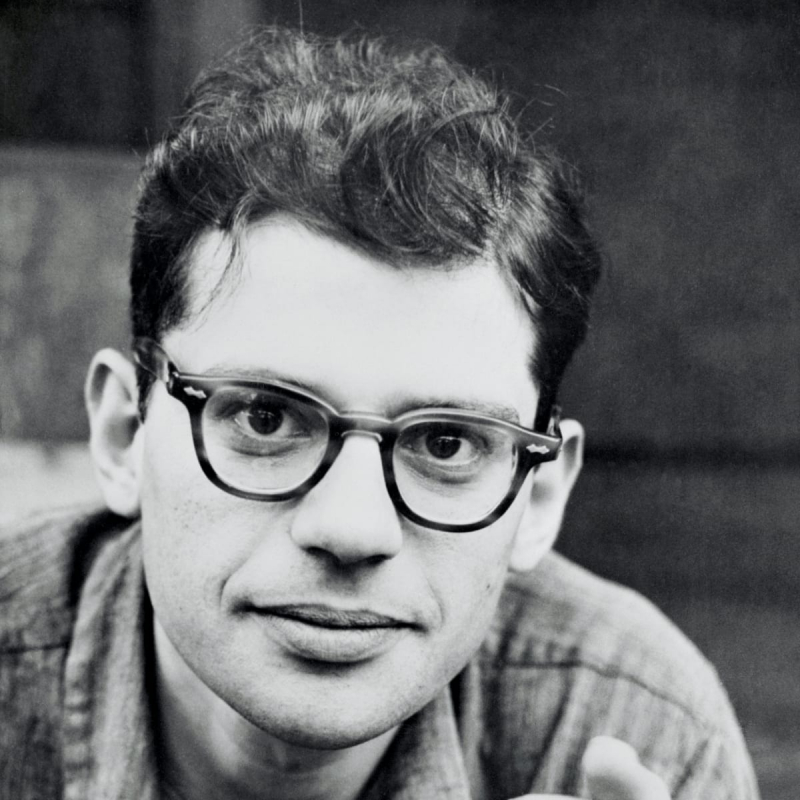
Photo: biography 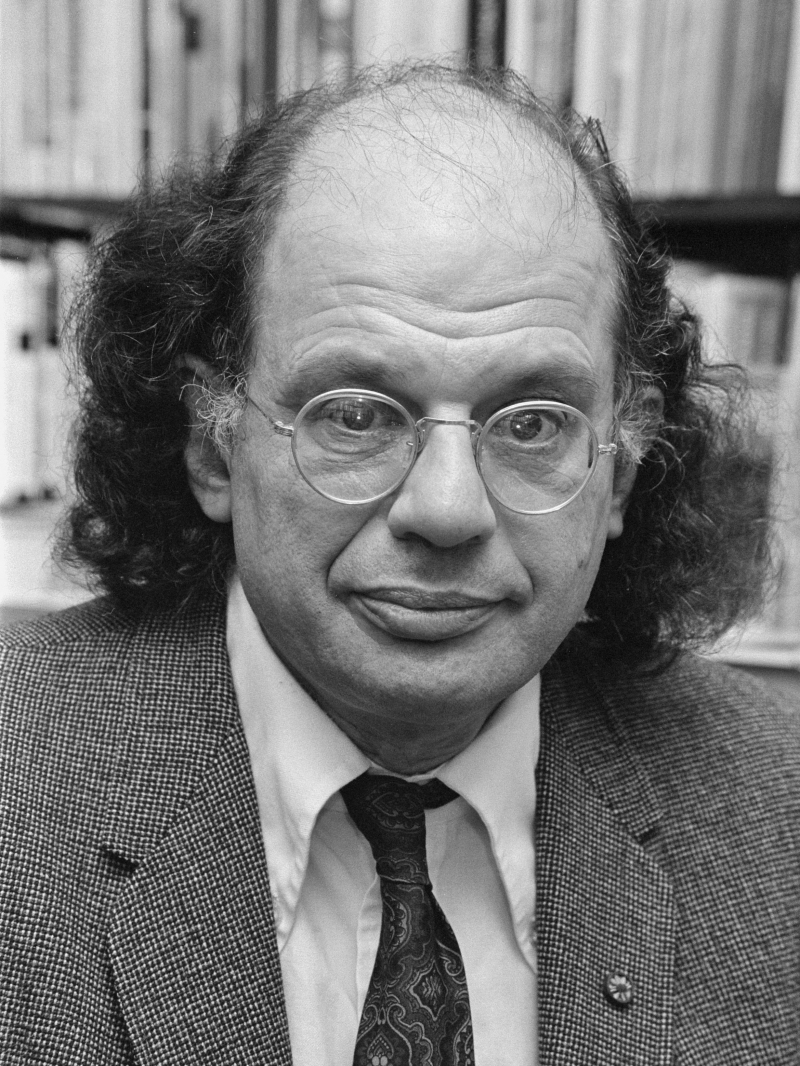
Photo: wikipedia -
Ginsberg met Peter Orlovsky, a teenage model for paintings, in the middle of the 1950s. Robert La Vigne hired Orlovsky as a model, and the two fell profoundly in love. Ginsberg encouraged his young partner in his efforts to teach poetry at the Jack Kerouac School of Disembodied Poetics in Colorado, and tried to inspire him to write poetry.
His candor about homosexuality is one accomplishment that is frequently regarded as both his most important and most contentious. Ginsberg was an early proponent of freedom for gay people. He discovered “mountains of homosexuality” within himself in 1943. In his poetry, he openly and vividly articulated this longing. By declaring his lifelong partner Peter Orlovsky as his spouse in his Who's Who entry, he also made a statement in support of gay marriage. His candid discussion of homosexuality was viewed by later gay writers as a chance to communicate more honestly and freely about a subject that was before commonly only alluded to or metaphorically discussed.
He questioned and finally modified obscenity laws by writing about sexuality in graphic detail and using language that was frequently regarded as offensive. He was a fervent advocate for anyone whose speech disobeyed obscenity laws (William S. Burroughs and Lenny Bruce, for example).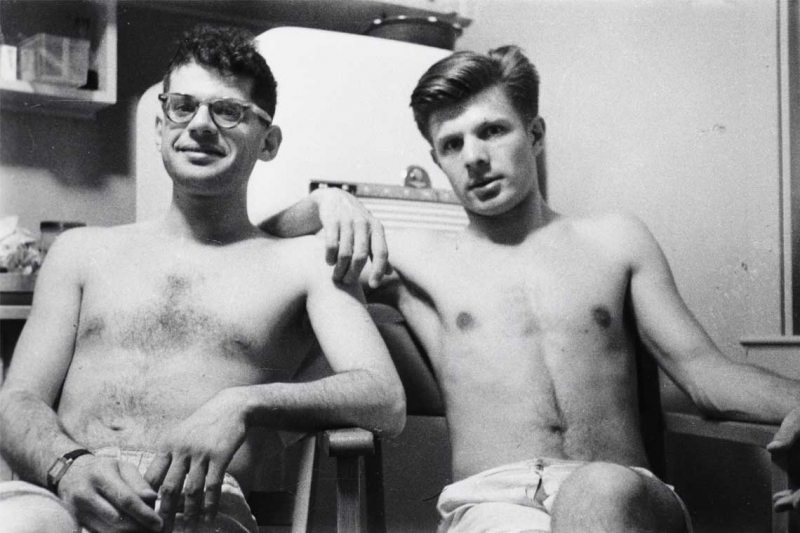
Photo: utoronto 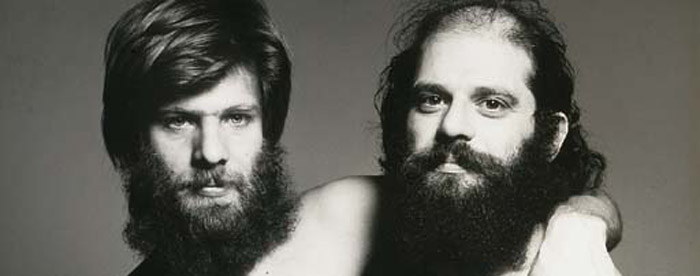
Photo: gossipcentral -
Ginsberg shocked the literary community in 1957 by moving away from San Francisco. He and Peter Orlovsky joined Gregory Corso in Paris after spending some time in Morocco. Corso referred them to the Beat Hotel, a run-down inn that was located over a bar at 9 rue Gît-le-Coeur. Burroughs and the others quickly joined them. For all of them, it was an active and imaginative period. There, Ginsberg started composing “Kaddish”, Corso wrote “Bomb and Marriage” and Burroughs assembled “Naked Lunch” from his earlier works with assistance from Ginsberg and Corso. The photographer Harold Chapman, who moved there at the same time and continued to take photos of the "hoteltenants "'s until it closed in 1963, provided documentation of this time period.
Ginsberg and Orlovsky spent much of 1962–1963 traveling extensively across India, living in Calcutta (now Kolkata) and Benares for periods of six months each (Varanasi). He also became acquaintances with some well-known young Bengali poets of the era, such as Shakti Chattopadhyay and Sunil Gangopadhyay, during this period. The most notable of Ginsberg's political connections in India was Pupul Jayakar, who assisted him in extending his stay there when the government wanted to expel him.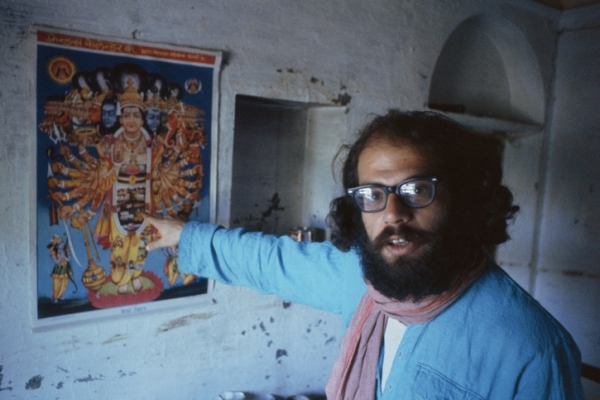
Photo: asiasociety 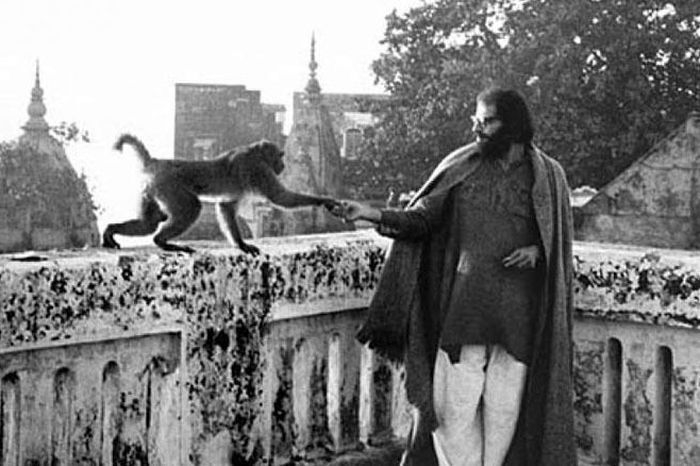
Photo: homegrown.co.in -
Ginsberg participated in decades of political protest against the War on Drugs and everything from the Vietnam War.
Ginsberg contributed to the anti-war pamphlet “A Call to Resist Illegitimate Authority”, which was distributed to draft dodgers in 1967 by the radical intellectual group RESIST. Mitchell Goodman, Henry Braun, Denise Levertov, Noam Chomsky, William Sloane Coffin, Dwight Macdonald, Robert Lowell, and Norman Mailer were other signatories and RESIST members. Ginsberg pledged to withhold taxes as a form of anti-Vietnam War protest when he signed the “Writers and Editors War Tax Protest”, pledge in 1968. Ginsberg later supported the War Tax Resistance initiative, which engaged in and promoted tax resistance as a form of anti-war protest.
Ginsberg's poem “September on Jessore Road” highlighted the suffering of Bengali refugees brought on by the 1971 Genocide and demonstrates his steadfast resistance to “imperial politics” and “persecution of the powerless” as defined by literary critic Helen Vendler.
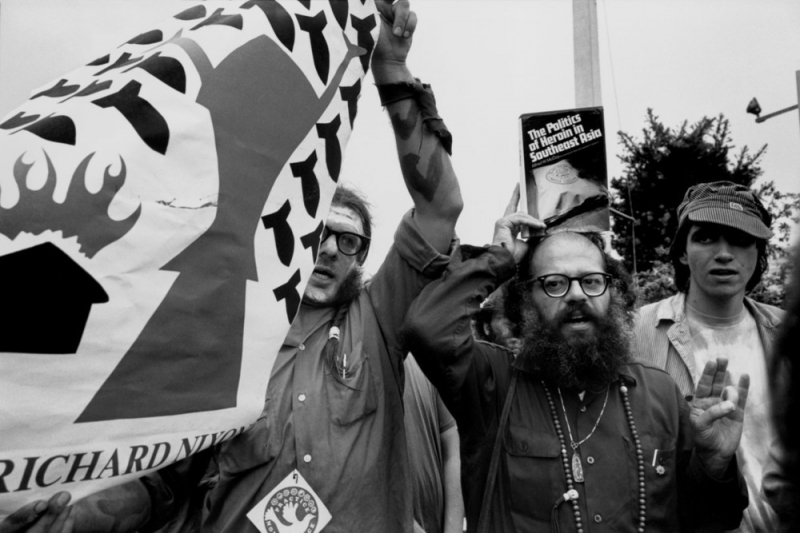
Photo: prathysha-kothare1.medium 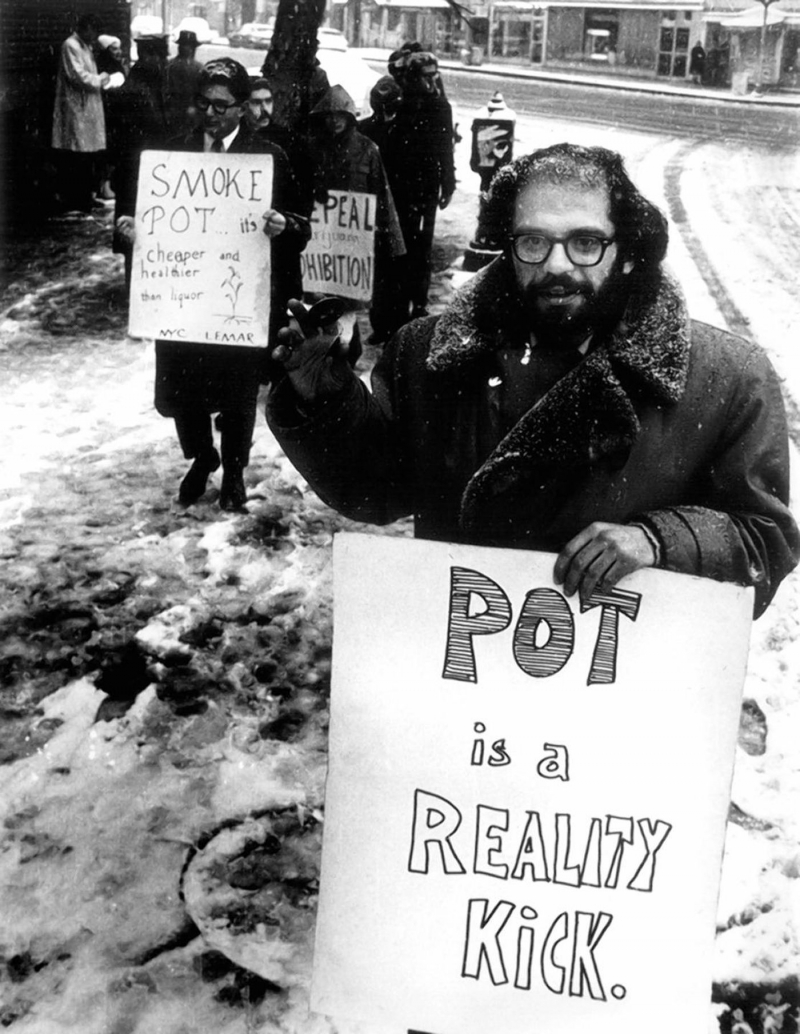
Photo: legacyprojectchicago -
Ginsberg kept calling practically everyone in his address book to say goodbye after making his final trip home from the hospital, where he had been unsuccessfully treated for congestive heart failure. Talks with Johnny Depp were occasionally sad and interrupted by tears, while other calls were happy and upbeat. Through his terminal illness, Ginsberg continued to write, and on March 30, he finished his final poem, “Things I'll Not Do (Nostalgias)”.
One of the interesting facts about Allen Ginsberg is he has many final resting places. Ginsberg was cremated after passing away in 1997. In accordance with his instructions, his ashes were divided into three equal portions and interred in various locations. The remaining third was interred with his family in New York, the remaining third in India. When his long-time partner, Peter Orlovsky, passed away, the final third of the ashes were buried alongside him. Thus, whether in life or in heaven, he has always been with the person he loves.
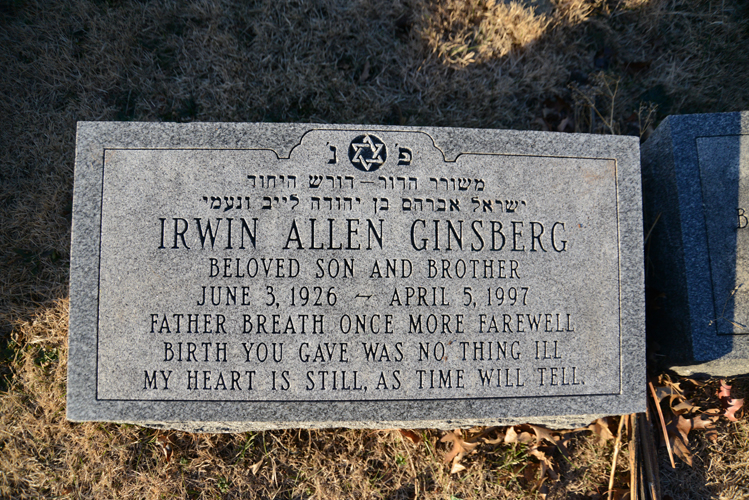
Photo: findagrave 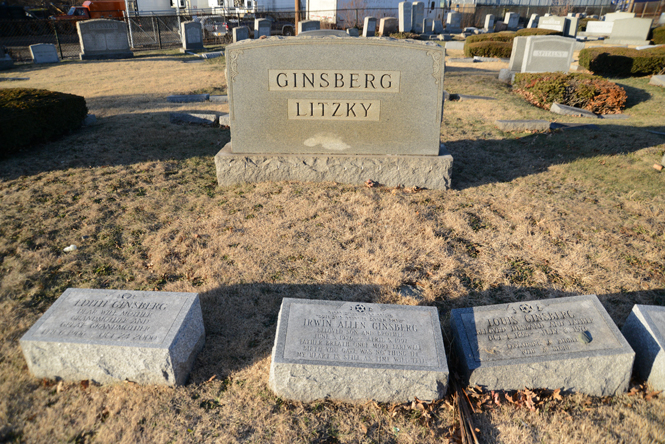
Photo: findagrave

























